It’s no secret that Spaniards like to eat. With tapas, paella, and sangria taking the spotlight, Spain has built quite the reputation for serving up crave-worthy bites that can’t be found elsewhere. Like the hobbits, they have multiple meal times throughout the day, in a seemingly never-ending cycle of sitting down to dine. Although they don’t celebrate ‘Elevenses or Second Breakfast like Frodo, they do have their own unique schedule that differs wildly from what we are accustomed to in North America. The standard three meals a day is thrown out the window, traded in for five distinct chances to stuff your face:
Desayuno
Almuerzo
Comida
Merienda
Cena
A Guide to Eating Like a Local in Spain
Desayuno: 7.00 a.m. to 9.00 a.m.
Desayuno is translated to ‘breakfast’ in English, but discard your dreams of bacon, eggs, and pancakes. Desayuno is simply an early morning sit down for coffee and pastries. The most popular thing on the menu is what my husband calls “Pan Tomaca”, or “Pan y Tomate”. Instead of butter and jam, this is the Spanish go-to: toasted baguette with a spread of olive oil and blended tomato.
Also, you can’t have desayuno without getting a zumo—freshly squeezed juice (typically orange). Served out of a machine that looks like it is going to send you a fast-pitch baseball, it squeezes three or four whole oranges to make the freshest squeezed juice you’ve ever had. Delicious.
The coffee order is also paramount for looking like a local. Drip coffee isn’t really a thing abroad—it’s all espresso-based. So, you have three choices: straight espresso, espresso with water (cafe americano), espresso with milk (small—cortado, large—cafe con leche). Don’t try to get fancy or make modifications to this basic coffee selection. It isn’t a Starbucks nation and anything off the norm will more than likely get you frowns of confusion.
Almuerzo: 10.00 a.m. to 12.00 p.m.
In essence, this is the mid-morning cafe break traditionally celebrated with another coffee and a heartier snack, like huevos rotos. Huevos rotos (literally “broken eggs”) is a base of sliced potatoes (typically boiled or crispy fried), topped with runny eggs and jamon serrano. This fork and knife dish gets cut and blended together in a tasty medley of flavors and can often be shared. Another common option is a ‘tortilla de patata’, which is a potato and egg omelet, cut and served like a pie slice. Both of these popular tapas dishes are served during most meal times. As a note, be aware that during this mealtime you may find many businesses lock their doors for a bit.
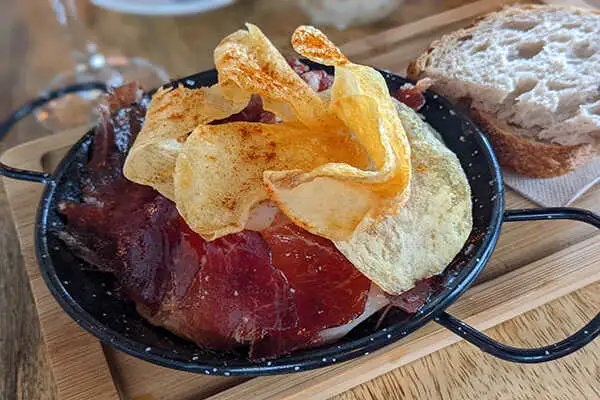
Comida: 13.00 p.m. to 16.00 p.m.
This is the main event. Businesses shut their doors for several hours to meet family, go home, or out with friends. Reservations are not mandatory but are recommended, especially for outdoor dining on a nice day. Take note—2 p.m. or 2.30 p.m. is the proper time to dine. If you show up later, the kitchen may be closed—despite what Google or their website may say. A typical menu of the day includes a starter, main, dessert, bread, and water/wine for about $10 to $15 per person. Meals last several hours and are not rushed, guided by the pace of the diner. There is even a word for post-meal lingering called ‘sobremesa’. You’ll need this time to digest the wine, which they often water down with gas water to make it through the rest of the day. Note that in touristy areas you will find open/close times to be much more flexible than in smaller cities.
Merienda: 17.00 p.m. to 19.00 p.m.
Akin to happy hour, this is the prime tapas hour! Spill on to the street with your fellow locals and order a pincho (snack) and a drink. For about $2 you get a bite of food (maybe on a stick, served on a toast point, or something pickled) and a small cup of wine or beer of the house. Typically, tapas are served in a casual bar atmosphere—standing around a barrel table or sitting on stools. Most places also offer the signature drink for this time of day—sweet vermouth on the rocks with an olive.
Cena: 20.00 p.m. to 00.00 a.m.
The is either an extension of merienda, meaning more drinks and tapas, a lighter meal like pizza, or it’s your full-on big meal of the day should you so desire. All is fair game at this hour.
Get Your Free Spain Report Today!
Get Your Free Spain Report Today!
Learn more about Spain and other countries in our free daily postcard e-letter. Simply enter your email address below and we'll also send you a FREE REPORT — Live the Good Life in Sunny, Affordable Spain.
By submitting your email address, you will receive a free subscription to IL Postcards and special offers from International Living and our affiliates. You can unsubscribe at any time, and we encourage you to read more about our Privacy Policy.
What to Eat That Can’t Be Missed

Although it may seem tapas take the main stage in Spanish cuisine, there is really so much more than just small snack plates. Below I illuminate some of my personal favorites that can be found across most parts of Spain, and some you may want to travel to find:
Chuleton
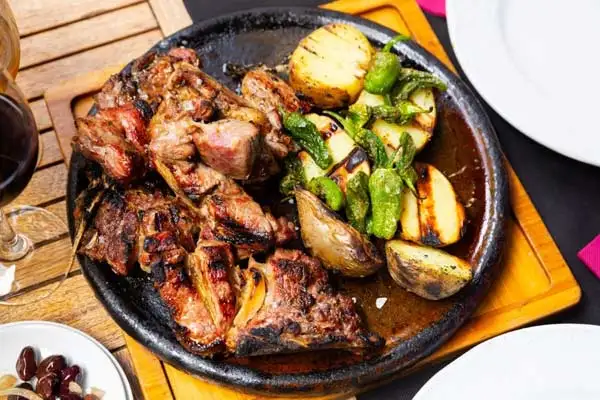
The granddaddy of all steak dinners, the beast to conquer all special occasion meals, I give you: Chuleton. This ribeye steak is prepared so simply—a huge cut—typically at least a kilo, soaring over two pounds of meat on your plate, is often dry aged for weeks and served rare with a touch of large flaked salt.
When I say rare, don’t be an “I only eat medium well meat” American. Do yourself a favor and give this a try. It’s seared for all of maybe a minute on each side and served as red as Rudolph’s nose on a warmed plate in slices. It is not uncommon for the steak to be accompanied by a hot stone, a hot plate, or another device on the table for you to sear your meat to your preferred temperature once it has been delivered. Rub some of the steak fat around the hot plate to grease the plate and keep it sizzling. Simply worth drooling for.
Fideua
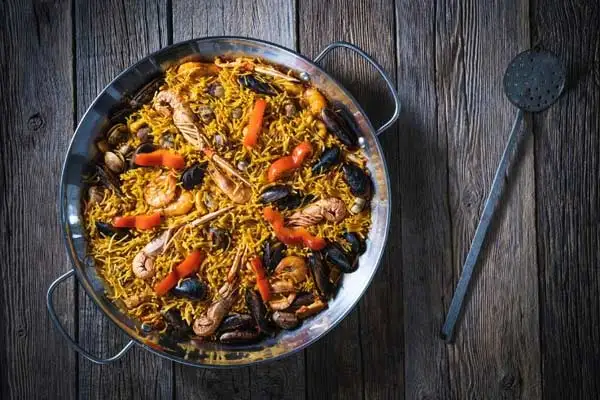
When it comes time to eat in Spain, I have found that the number one requested meal from my visitors is that they want paella. Although a classic illustration of Spanish cuisine, this dish is not readily available or popular throughout the Spanish nation. For instance, in my town of Zaragoza in Aragon, paella’s arborio rice is traded for the preferred thin vermicelli noodle called ‘fideo’ to make the same exact dish—but with pasta. This regional specialty is called ‘Fideua’. Fideua can be found in the Catalan region as well as Aragon, offered as the crunchy, saffron-based starch to accompany anything from mariscos (seafood like gambas, prawns, mussels and clams, chipirones, and calamari) to meat-based fiduea including local rabbit, chicken or other meats. When I first saw this offering at a Spanish wedding, it was served in the same large, round double-handled oven-safe skillet as paella. I said with excitement to my husband, “they’re serving some kind of Chinese noodles over there!” It perplexed me—the look was that of maybe a small cut lo mein, but the smell and the flavors were that of paella. It was love at first bite.
Pulpo a La Plancha
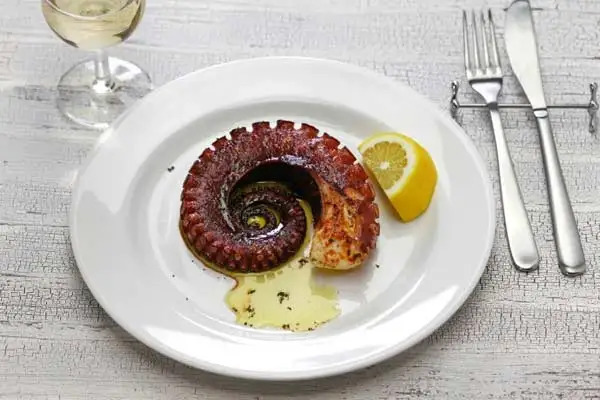
This isn’t your every man’s fried calamari appetizer. Pulpo starts as a large, purple lego-holed tentacle and it is sliced into thin circles about the size of a cocktail toast. ‘A la plancha’ is the style of cooking, in this case, grilled on a hot stove. It is served hot with olive oil, paprika, and a touch of flake salt on top of a round wooden cutting board. This chewy dish is something every visitor to Spain must try.
Croquetas
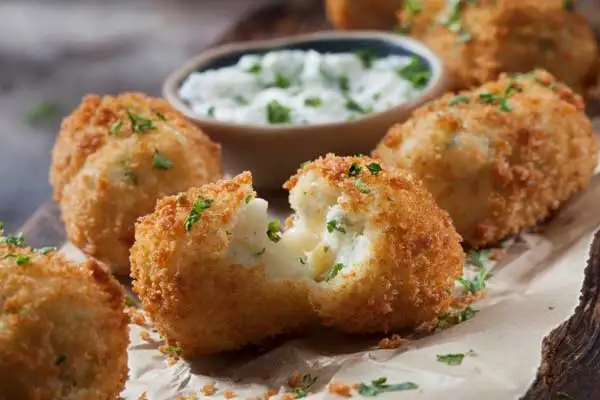
These flavor bombs come in hundreds of varieties from chicken, jamon, seafood, vegetables, truffles, and so on. Found nearly everywhere, these are essentially balls of bechamel infused with the above flavorings and then deep fried into a globe or twinkie shape. These are common snacks to have at nearly every meal time.
Jamon
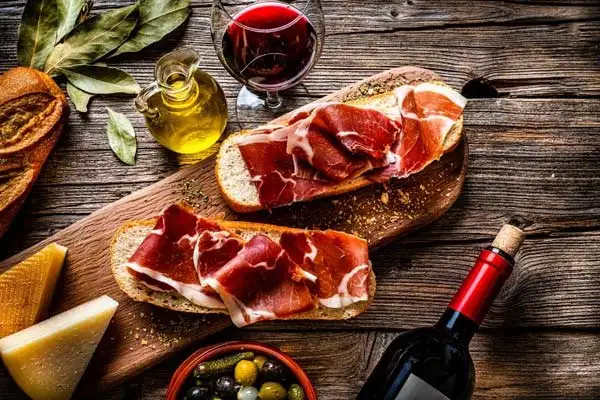
This list wouldn’t be complete without mentioning jamon. There’s a whole jamon culture in the U.S.—foodies and braggarts will show off their $200+ whole ham leg at holiday dinners, boasting about whether it was bellota (acorn fed) pigs or whether it came with a certain label to it. It’s almost like we’re talking about wine. Americans, especially, I have found tend to create this air of class systems when talking about jamon because of the import prices and lack of availability, but the jokes is on us. Once you get to Spain, jamon is everywhere. Dozens of ham legs hang from average grocery store walls, the big stores showcasing into the hundreds. The idea is to take home the whole leg and use a ‘jamonero’, a tool for holding the ham, and you slice what you want to eat bit by bit throughout the next several weeks. Jamon is all about the fatty marbling. The darker the color of the ham and the richer the marbling, the more creamy and buttery it will be. You’ll see jamon range from a light-colored prosciutto style to yes, the gorgeously marbled bellota that food nerds fight over in America. Jamon is served everywhere on everything. It’s on salads, on toast points, in croquetas, in main meals…you get the idea. For those who are part of this ham culture, you know. Jamon is life! And the great thing? In Spain, you only have to pay about $40 for a decent ham leg. Not too shabby.
Get Your Free Spain Report Today!
Get Your Free Spain Report Today!
Learn more about Spain and other countries in our free daily postcard e-letter. Simply enter your email address below and we'll also send you a FREE REPORT — Live the Good Life in Sunny, Affordable Spain.
By submitting your email address, you will receive a free subscription to IL Postcards and special offers from International Living and our affiliates. You can unsubscribe at any time, and we encourage you to read more about our Privacy Policy.
Ternasco
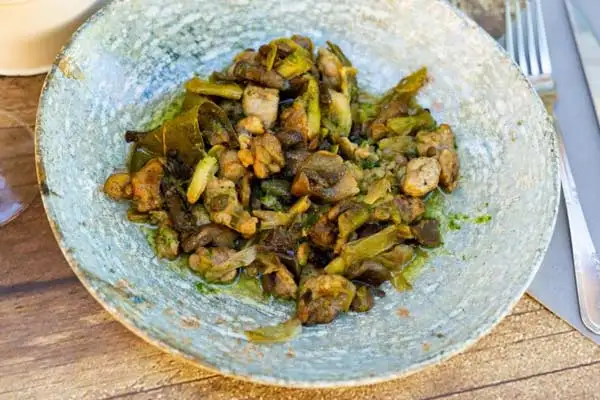
Although this range of dishes is regional to Aragon, it is worth seeking out if you enjoy lamb. Ternasco is the name of this suckling baby lamb, often prepared roasted in clay cazuelas, crispy and greasy like a suckling pig roast. Costillas, or ‘costillitas’ are lamb chops from the rib piece of lamb. These are served grilled with flake salt and french fries, typically, and are smaller than an average lamb chop. They are thin cut and about the size of two or three bites per rib. Both of these regional specialties are a treat.
Arroz con Leche

No menu of the day is complete without arroz con leche, or rice pudding. Served about the same as your grandmother might make, this can often have a slightly citrus or orange flavor to it as well, and includes a dash of cinnamon. Mmm.
Sorbete de Limon

By the time you’re finished the menu of the day, there is probably little room for more food. Enter the sorbete. Served in a champagne flute with a straw, sorbete comes in many flavors, my favorite being lemon. It’s a perfect apertivo of smoothie or ice cream-like consistency, icy cool, and fresh.
Carajillo
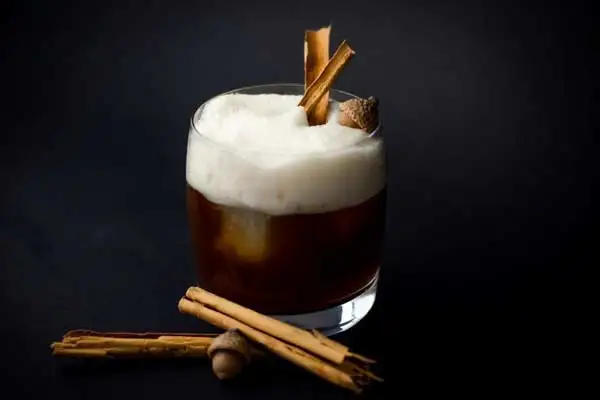
As your meal ends and sobremesa begins, there’s only one thing left to have, and that’s a “Carajillo con Bailey’s”. Simply a shot of espresso mixed with your liqueur of choice (traditionally Bailey’s Irish Coffee), this gives your booze-fueled meal a final kick of hi-yah before stumbling out the door towards your siesta.

About the Author: A dual-citizen of Italy and America, Maria lives full time in Florida, part time in Spain, and all the time in between planning adventures. Globetrotting since 1995, she's a daughter, girl-mom, IT Project Manager, and wife to a Spaniard. Maria is a karaoke wunderkind, natural born storyteller and creative writer. She's a wine and gin enthusiast and charcuterie builder extraordinaire. Seeking to inspire others to “Travel More”, she shares stories of misadventure, destination spotlights and more at her site AlwaysPackTissues.com.
Get Your Free Spain Report Today!
Get Your Free Spain Report Today!
Learn more about Spain and other countries in our free daily postcard e-letter. Simply enter your email address below and we'll also send you a FREE REPORT — Live the Good Life in Sunny, Affordable Spain.
By submitting your email address, you will receive a free subscription to IL Postcards and special offers from International Living and our affiliates. You can unsubscribe at any time, and we encourage you to read more about our Privacy Policy.
Related Articles
An Overview of Traditions and Culture in Spain
